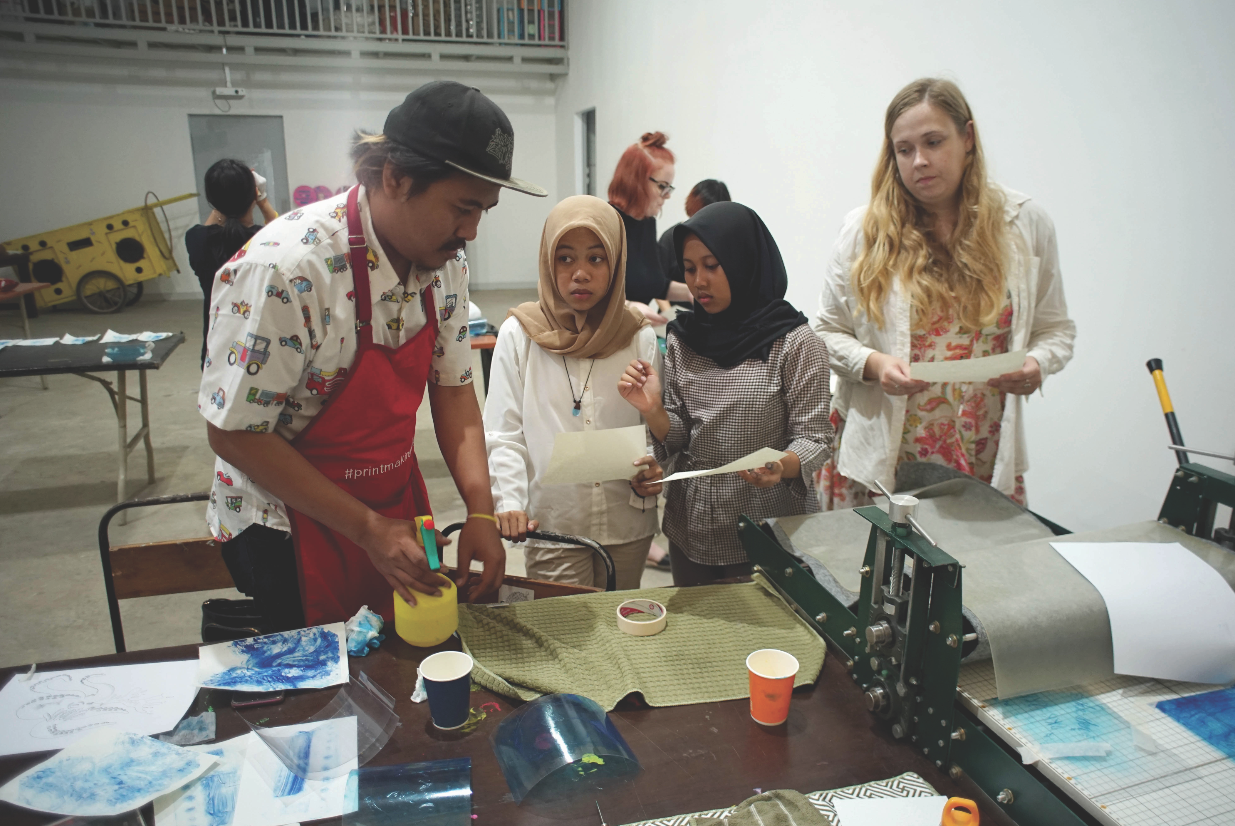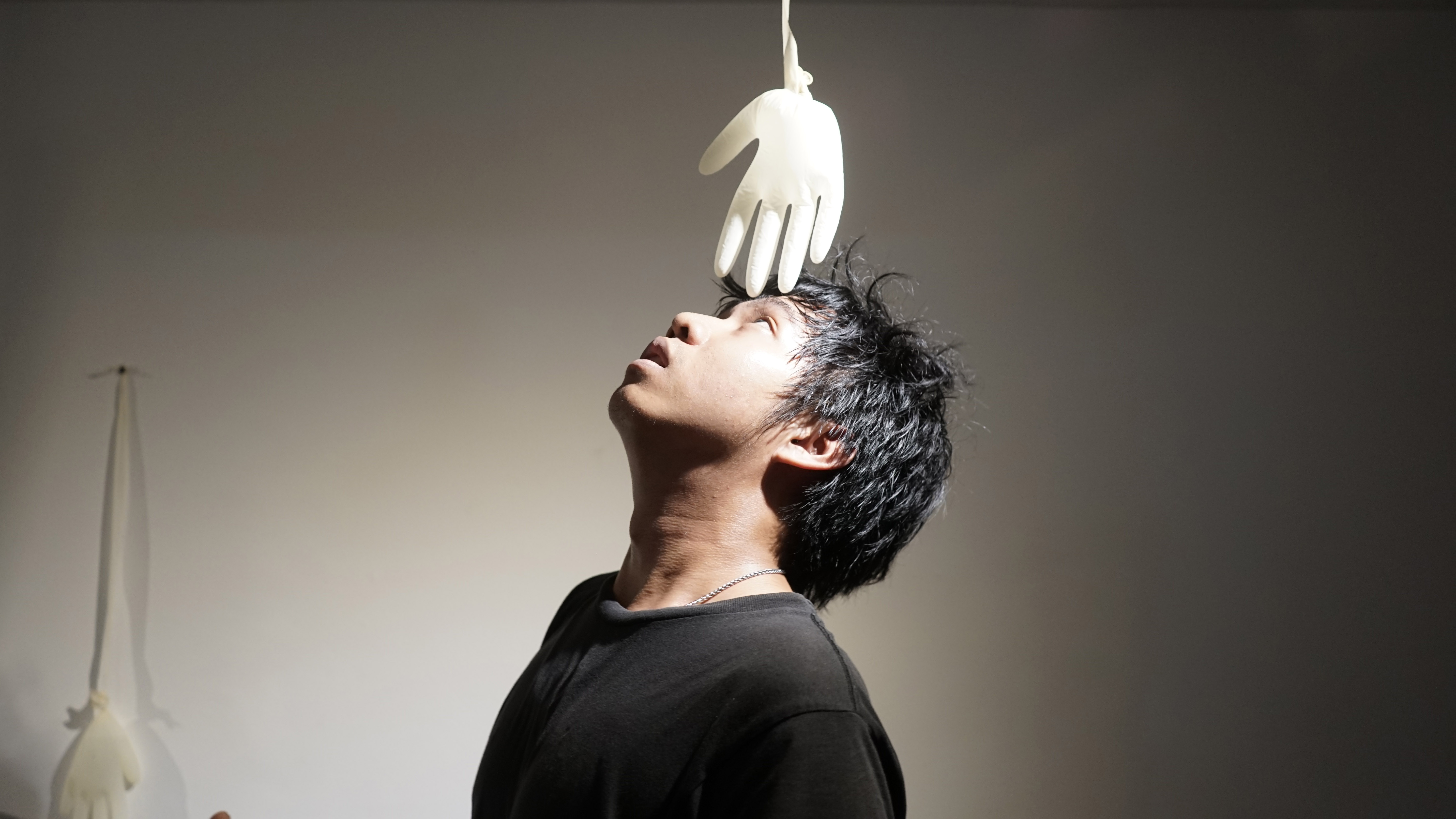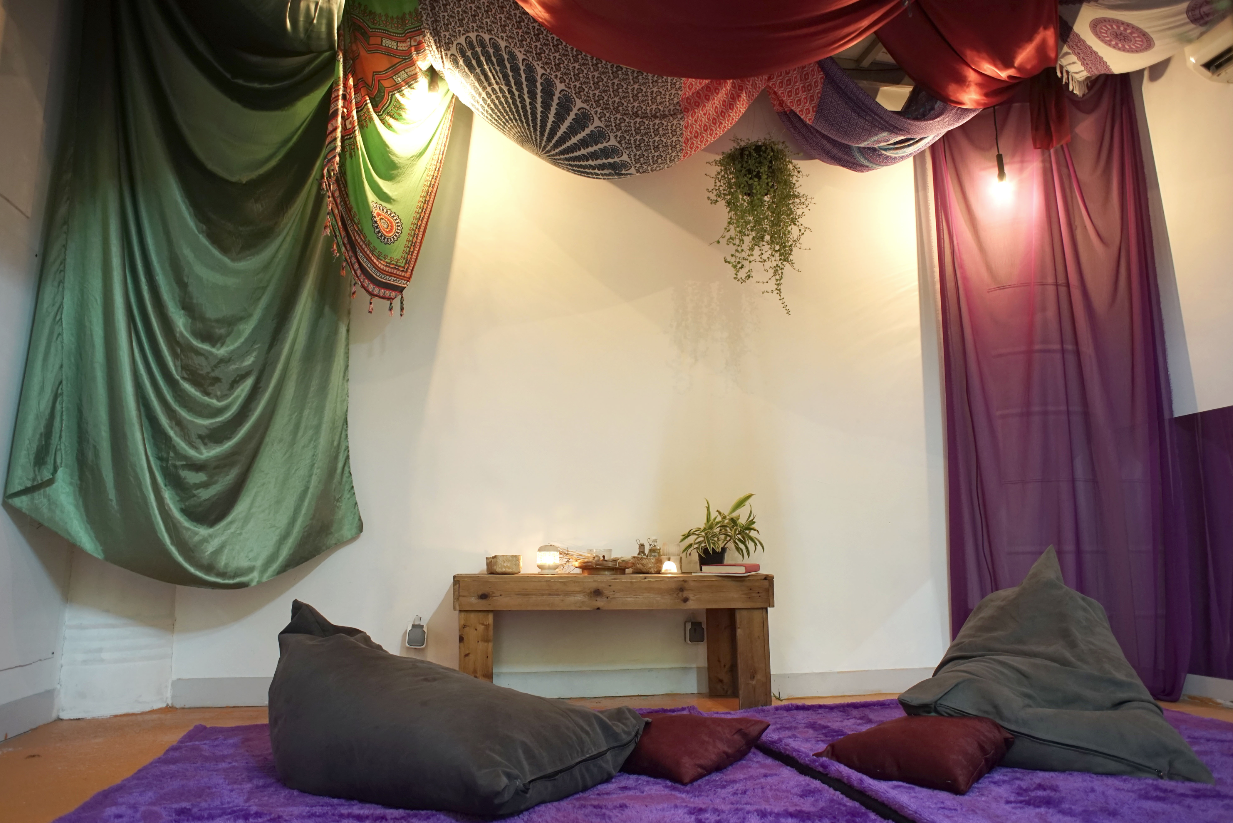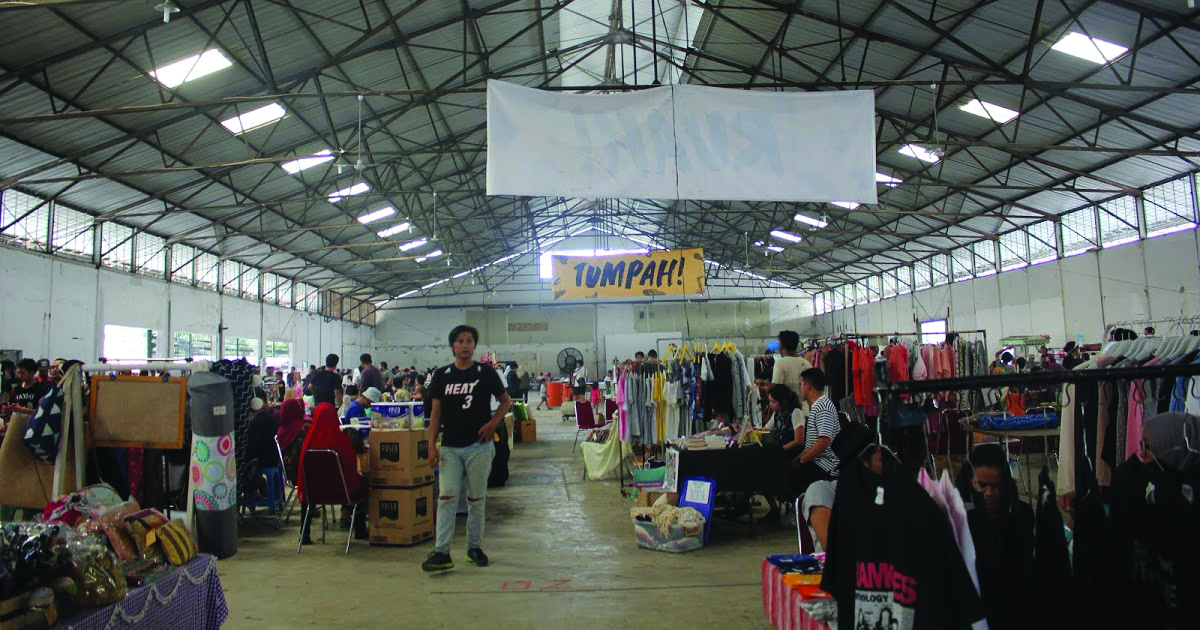It took time before Documenta chose a collective for the artistic direction of the “100 days museum”, as well as it took time for them to recognize that artists could be responsible for that job and, at last, to recognize that visual art goes beyond its own limits. However, by choosing ruangrupa, an Indonesian collective based in Jacarta, the mega event’s selection committee took a giant step towards correcting those flaws.
Since 2000, between karaoke sessions, music festivals, video programs and art biennials, ruangrupa has been showing its versatility and critical reflexion capacity in a wide scale. Though unknown by a specific art world – commercial, atomized and objectual -, that insists in seeing itself as the only art world, ruangrupa has already got many connections with Brazil, since participating of São Paulo 31st Biennial and also by being a member of Arts Collaboratory (a collaborative transnational project that gathers 25 initiatives from the Global South and has become a reference for autonomous initiatives here).
One can’t help but consider their nomination audacious, considering that the collective’s commitment is much less to contemporary art’s paths than it is to life itself – “make friends, not art” is one of its slogans. But, as one of its members recalls, Documenta was precisely created to reconnect Germany to the rest of the world, taking care of the wounds of the war and bringing into account what was stigmatized by the nazis as degenerate art; that is to say, the exhibition is born out of a vital impulse. A challenge for Documenta today might be, therefore, to understand how to address colonial wars violences that stamp the current global context.
But until what point can ruangrupa invent another structure within Documenta – more process based, diffuse and less spectacular? Symmetrically, one has to think if the quinquennial exhibition’s sophisticated machinery won’t break due to any initiative that overflows it. Talking with farin rakun, member of the collective, we approached these issues, while also discussing collaborative practises and the recent developments of ruangrupa, which is actually reinventing itself and switching names, through new alliances with other initiatives.
Benjamin Seroussi: We worked together in 2014 at the São Paulo Bienal. Since then, I followed from far away some of your more recent projects but I would like to take the opportunity of this interview to get updated about ruangrupa’s projects and internal governance. The text you wrote in 2015 for your 15th anniversary was a genuine effort to show where you were standing. Do you still look at it as relevant or things changed a lot in past years?
Farid Rakun: A lot of stuff’s changed. Maybe it’s good to tell you through timeline.
In 2015, through doing Jakarta Biennale, we found an ex-warehouse space… 6.000 sqm indoor space and 10.000 sqm together with the outdoor. Anyway, in the end of 2015, early 16, we decided to take over/occupy the space, just like what you did in Casa do Povo… in a different way of course but basically occupying… with paying rent though… not high, but still a lot of money. The rent was for 2 years – so 2016-2018. We left our rented house, asked other collectives to move in with us, occupying all those spaces together, and built what we then understood as an ecosystem. A collective of collectives. It was at that moment ruangrupa, forum lenteng, serrum, and grafis huru hara… We came together under one roof. We also made the projects jakarta 32 and ok.video go independent, not under ruangrupa anymore.
It was fun. we tried to experiment with being a (second-hand) landlord, renting it out again to other concerts or events, etc. This is also our first major attempt to play with the notion of income in order to make our own economy so we can be fully independent from foreign/national funding.
Fast forward until 2018, we somehow managed to accumulate some resources in order for us to buy a property… impossible to be as big, impossible still in the same central area. Just unaffordable that scheme. But at least we don’t need to pay rent anymore. So we bought a 700sqm plot of land in the south of Jakarta. And were talking about what could we be next. Pushing the ecosystem even further. Logically. So what we did was to decide that we’re becoming a school. From that point we became GUDSKUL. (pronounced “good school”). Forum lenteng didn’t join, now it’s formed by ruangrupa, serrum + grafis huru hara.
It just started in november, our first regular 1-year program. Right now it’s the semester break. The school concentrates on collectivity and ecosystem building basically. We started with 11 different subjects, with each handled by one of our members. Julia Sarisetiati for a subject about collective sustainability, for example; MG Pringgotono on education for and through collective art praxis; Ade Darmawan on collective ethics and politics; Leonhard Bartolomeus on collective curating; while myself on the meeting points of architecture and art; just to name a few. From the beginning we intended this process to be participant-led and experiential-based learning, but we only really put them into practice in the middle of the first semester, when we realized that a lot of our plans (including, personally speaking, breaking our process into different subjects) didn’t work out as we intended it to be. We discussed a lot with our inaugural participants about this. Right now, the school session is in a month much-needed break. As you can maybe understand by now, it is an intense, rich and demanding process. And it just started. We still have forever to make this a constant work-in-progress.
On visibility, since november or a bit before, we have started to use gudskul as a label to come out, instead of ruangrupa, in shows at least. and the question always becomes right now: how can we bring anything we do to enrich gudskul itself? this is our main practice + concentration.

That’s interesting. At Casa do Povo, we have been thinking also for a while now about how to connect all the knowledge that is present here (there are around 25 groups inhabiting the space). We thought of a somehow open pedagogical program. But we haven’t really found out how this could work yet. When reading you, I have the impression that some projects became too big (Jakarta 32 or Ok.video) and that they continue by themselves so that you could create new partnerships – changing in order to stay the same. I am curious to know if the school became a new possible identity for the ruangrupa and the other collectives? Is it also a way to organize yourselves in a different way? How did the school create a sustainable economical ecosystem?
Yes. School is also a business model. It’s not free. It’s like we’re institutionalizing ourselves… in our own way… which is funny, because it’s something that a lot of people in european art world seem to be afraid of – institutionalization. Besides, we started since november to pay ourselves more properly. The goal is to have people concentrate their energy to build the ecosystem instead of having to do shitty jobs that only pay money by exhausting the energy. Ethically, why we’re doing this is because we want to know more as well as saying that it’s impossible for everyone in Indonesia at least to be part of us. But there’s a way to use us as a resource. By spending your time as much as you can, maximum intensively a year, with us. And take whatever we have… knowledge, network, space, infrastructure. But hopefully (that’s why we’re giving scholarships still) those who come from outside of Java will come back to wherever they come from and build something else. That’s the idea. + yes, our ecosystem and Casa do Povo have a lot in common. Agree on that.
People are afraid of institutionalization in Europe because they already have a lot of institutions. So they need to exist in between – or besides – them, inventing in-between spaces. In Brazil, even big museums seem to work like independent spaces – often fighting for the same resources we fight for. So, to build an institution in our context – and maybe also in yours – is also a way to “institute” (in the sense of “bringing to life”) other ways of doing things. I like the idea of becoming a resource. Maybe this is the best institution we can imagine – a copy left place where you kind if find scores and tools to use. But you also need to keep doing things. So how can you be a resource for yourselves? Do you run other parallel programs as ruangrupa still … or individually? This question is also a way to start asking you about Documenta 15 as a ruangrupa project and how it connects to GudSkul.
We were busy establishing gudskul. Then documenta happened (hahaha). It was not in our plan, as you can guess already. It was very fresh, + in the peak of a lot of struggles, excitement, thinking hard together, trying to figure things out. Because, of course, our first plan didn’t work (haha), we needed to rethink a lot of stuff. practically + conceptually. Then, documenta happened, yes. ruangrupa was asked if it was in our interest to participate in the selection as one of the candidates. It didn’t make sense to use the gudskul banner at that point. Because gudskul has not done anything under its belt + to explain it’s the latest iteration of ruangrupa is also not correct, as serrum and GHH are there as well. We never thought it could come up to this result. That we were asked to be the artistic director… if you had asked me when we were doing sonsbeek in NL whether moving on to be involved in documenta was a logical next step, I would say ‘no way’. Because documenta has done nothing about our context and we’re not thinking anything about it. From our team of ten people that is becoming the Artistic Direction of documenta 15, only I had ever visited documenta, in 2012… No one else had ever visited Kassel. It always felt that it had nothing to do with us. No indonesian artists had ever been present.

Didn’t Sonsbeek also felt as a little bit outlandish at first sight?
Sonsbeek was better because it’s NL dutch connection. Easier to fathom. All of us at least had been to NL once. If not more. In that sense, Indonesian artists are everywhere in NL.
The old coloniser?
Yup. Their problem, not ours.
This brings me to another question. I am intrigued about how you will face a kind of “reversed exoticism” of the German context. ruangrupa is an internationally acclaimed initiative but it strives in a context in which working and living conditions are very different from Kassel. And as you said, it is very distant from you and has always been. The fact that no Indonesian have ever participated is definitely a good measure of this indifference.
I understand why the committee and Documenta are interested in ruangrupa. It is challenging, refreshing and it is a good opportunity for Documenta to open up to a new public and also to new parts of the world. But, I wonder, to what extend can Documenta be interesting for ruangrupa? Of course, it is a unique occasion to turn visible and reflect on all that you have been doing in 20 years. But how do you see the possibility to use/hack Documenta and the expectations it generates beyond this? Do you think the multiple and diverse voice of ruangrupa will be heard?
We decided to not make a proposal, but to disguise what we’re doing anyway as an invitation. The stuff about ecosystem, resource, sharing, etc. We talked about it before. We asked documenta whether they’re interested in being a deciding partner on that. If they share our interest and are willing to walk the curious way with us, very nice, but if not, we were going to keep on truckin’ anyway, if you know what I mean. With something like documenta on our side, we think we could scale things up, access things that were out of our reach. Be more visible as well, but also force us to be more responsibility, of course. Like the infamous Spiderman quote, “With great power comes…” Let’s not finish that sentence.
Frankly, I am still surprised and baffled that documenta in the end of a finding process, through the decision of its Finding Committee, accepted our invitation (or what they still insist on understanding as a proposal). Then our interest could and should and would be scaled up. Then it’s not our context anymore, but contemporary art context. Planetary. It’s too soon to say what d15 will be, because we don’t know yet. but we’re starting by working to see documenta as an institution, as a bag full of resources as well – reputation, scale, space, interest, history. Kassel is a part of that of course.
What I realized last week by being in Kassel properly to work (not for interviews or press conferences) is that it’s time for ruangrupa to realize our dream beyond, but still referring to our context. Not Indonesia per se but those who are invisible to this point. We’re still unknown in the contemporary art scene. Frieze didn’t know us, NYT didn’t know how to find info about us, for example. The german public never heard about us, majority of them. In france, the art media needed to say ‘we had the small chance to see them at work actually, in that thing in centre Pompidou called cosmopolis #1 in 2017’, another example.
One of the things we’d like to start with is to map the incl. geography since the first edition of documenta until the last. Then we think it’d be easy to see holes in this map. Again, what to do with it, let’s see. we need to do it first. Another is to find partner(s) in Kassel. This is easy for you to understand, because we kind of did it in much smaller scale in your SPB.
We want to be present in Kassel, with space… something we learned also from ‘ruru huis’ during sonsbeek. We cannot delegate this really. We need to work together with someone local directly. With us being present, how to do it practically, we’re still discussing. We’re only officially working for documenta starting in june. but we’re preparing as much as we can so in june we’re ready to roll and rock.

I think the fact that Documenta was not on your map is more interesting then the fact that you were not on the map of Documenta. Eventhough New York will never wake up and realize it is not the center of the world, there is something funny about the NYT google translating your website to find some info. And suddenly, you come to this place but you don’t need to use their resources if you don’t want to – as Audre Lord says, anyway “The Master’s Tools Will Never Dismantle the Master’s House”. But you can also play with them. Nothing holds you back. So, when you and ade talked at the press conference about tackling the violence of the colonial wars and it’s consequences through documenta 15, it is less about what to do (bringing artist from specific regions to light or discussion conflict) and more about how to do things (sharing, sampling, dubbing, cutting, joining), right?
Yes. It’s not representational we’re thinking. We kind of know what we’re planning to do, but not the result.
So it’s too soon to know which members will move to Germany, if you will rent a flat, how will you slice/divide time – the next years and the famous 100 days – or Documenta’s space (Fridericianum)?
We are thinking about renting a place… not only to live together but also one with a street access… We half-jokingly said we would open an indonesian restaurant. The point is to use space as a curatorial method. incl. the famous documenta’s spaces. Fridericianum, documenta halle, neue galerie, grimm welt, stadts theater. as what? We’ll see. Like our music festivals and karaoke, for example, we’re thinking to use it for something as well. Maybe installing gudskul in kassel’s kunsthochschule? Or an initiative about homeopathy straight into their hospital? All these are also spatial practice.
What will be the soundtrack for Documenta 15?
(hahah) soundtrack would be great. We were thinking about it for sonsbeek. Never happened. Although we had an idea what’s in it. This time, it should happen. You’re right. Has casa do povo always been 25 groups? Or it has been growing exponentially since 2014?
It grows in a quite organic way. It does remind me about what you did from 2016 to 2018. I know chimurenga also worked like this when it had its space in South Africa.
In our case, the limit is our capacity to deal with the groups. We developed some tools. For instance, we divide time in order to share space (usually, people divide space and share time). It means that we try to avoid for a space to be one thing only. This has allowed us to host many different groups in many different ways – each group has its singular agreement. We do not need any general rules. We are not a public space. So we adapt. And each group somehow inflitrates the institution’s organization. The groups we host have to dialogue with our main axes but then, they do whatever they want within this frame. The main consequence is that the notion of art and culture exploded – we are inhabited by a contemporary dance group and a boxing academy, Bolivian pirate radios and a psychoanalisis clinic, a journalist agency from the outskirt of SP and a sewing workshop, etc.
Our challenge today is to keep the space empty some times so that it breathes. When it is empty, it feels everything is possible.
To close this Documenta 15 subject, I would like to ask you about what you will not do and also about your fears regarding the potentially toxic situation that such a visible project can create. Do you think this can affect your organization in a way?
It’s difficult this one.
Wait, let me comment on casa first. it’s a great tactic. it works well? time + space?
It does. There is a certain loss of control – and maybe also of quality but there is definitely a rise in energy. I recently heard about a workshop that the swiss artist Thomas Hirschorn gave: he asked the participants to comment on each others’ works using the notion of “energy” rather then “quality”. Rhere is something interesting there – eventhough it might also be dangerous at one point.
The loss of control is also about descentralizing decisions and having the proper tools for that. It can be very simple – every group has the key of the building, they all access a google agenda calendar to see when there is time available and so on.
Nice. I’ll introduce it to gudskul next time. tx. + I’ll let you know if we ever did it the kind of realizations we come up with (hahah).
Do it. It’s copy left. I am sure we even took it from somewhere ourselves without knowing it. Just tell us where it took you. Now you answer my question (ahahahah).
Ok, back to your question: one thing for myself maybe easier: it’s easy to be spoiled by the machine.
Because it’s well-oiled. It’s like apple products or business class flights. It’s hard to go back. I hope I don’t get that spoiled, but I am spoiled by apple products and the first time I got bumped into business class, I started to think, ‘how could anyone fly another way?’ but luckily I haven’t bought any business class for myself until now, + I won’t start soon. But having this machine producing your vision and how everything is almost on your finger tips is tempting.
What I realized for sure is after all these jazz, we’ll come back doing things with no budget, no human resource, nothing but willingness and obsession (love, others would say). We should be able to do that still. And what I remember is when one of the juries asked us what we’re the most afraid of, my answer was ‘losing them’, pointing to Ade and Julia. I just don’t want ruru to break up because of this (ahah) because there were sometimes in the past that we almost call it quit. With gudskul hopefully it’s different. And the most important thing: gudskul needs to benefit from what ruangrupa is doing. How? Again we still need to fight for our time to sit together one more time + decide on stuff.

I remember you commenting to me a long time ago that we needed to use “hipsterdom” in our favor. I was struggling with the idea of accepting something that felt a bit too spectacular for Casa do Povo and your comment helped me back then. Anyway, even though the “apple product effect” is a threat, we do not need to become what we use, but we can use things to do other things in silence. The system never changes easily nor fastly but we can twist it here and there and go back to were we were, but in a different way. Our time is not linear.
Coming back to your main fear, I think it is very relevant what you said then: loosing friends is always a risk in these events. One could write a history of Biennales through its internal conflicts. It’s not about gossip. It’s about power. To avoid this, I think that, at the end of the day, our work should deal more and more with the notion of “caring”. ruangrupa is famous for its motto “make friends, not art”. And this is a tough full time activity.
To finish our conversation, I would like to come back to when we first met during the São Paulo Bienal. Back then, you made some art and many friends – Clara Ianni, Etcetera, Daniel Lie, Ocupeacidade, Casa do Povo, Raphael Escobar, among others. Can you tell us more about what you learned from your São Paulo experience… and of course, when do you plan to visit?
São Paulo is still one of our favorite places collectively. We might disagree on details, but everyone agrees that São Paulo was like a second home for us and we have been missing it a lot. I told this to everyone from Clara to Luiza to Daniel and your colleagues from Casa. We learned that our sensibilities actually make sense and could be transformed somewhere else and when it hit the right spot, like most of the time in SP (at least in 2014), it was sweeeeetttttttt.
When will we visit? Not soon enough. It’s never soon enough. ajeng will love it. and she might be the one going. But if any of us wins the lottery to accompany her, any of us would be happy. I wish it would be me (hahahahaha). And i wanna see Rio too.
